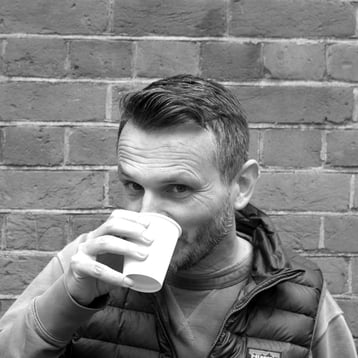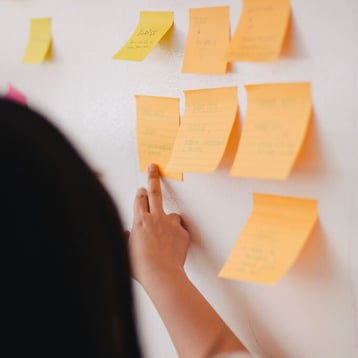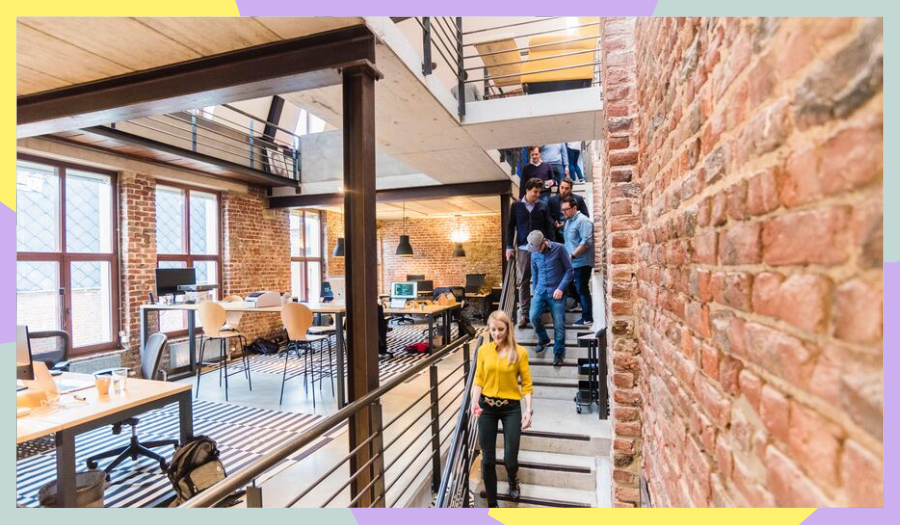
Tell us about a time you’ve used an Innovation Lab to help a client - can you share a bit about the client and the context?
Our client is a global enterprise software provider. Their core business was facing disruption and they wanted to explore future opportunities and ways of responding to that change.
Also, alongside their core, they had an increasingly valuable digital business - but only in the US. Our client’s hypothesis was that this digital business could be a vehicle for them to respond to the disruption in International markets, and they wanted to develop strategies and capabilities to do that and create a create a seamless consumer experience.
How did you get involved?
We were brought in to identify threats to our client’s business and facilitate a strategic review of the current business in International markets, a mapping of possible future states of the market, and a roadmap for our client to remain relevant in that future.
We gathered feedback from our client’s customers to get an insight into the challenge at hand. There were some tough learnings but our client responded in the right way and used that to fuel the change. It turned out that customers did not perceive our client as sufficiently agile, either technically or culturally; they already had providers when it came to front-end digital solutions. Although they liked this new product that our client was offering, it was increasingly obvious that International markets were structured and evolving differently.
Despite this, we still thought there was a sizeable opportunity for our client to develop a digital offering for their international customers. The core business were experts at managing data and we felt the opportunity was to leverage this as a way of creating several unique and differentiated products and services for the market.
After looking at many different routes, we felt that a Lab was the best way to develop and test hypotheses, search for new business models and iterate towards a new position in the market.
Can you tell me about the initial process of setting up the Lab and recruiting the team?
As a temporary part of our client’s company, and with the remit on change and innovation, we needed to look and feel different to the core business at each touchpoint. We designed everything, from the culture and location of the office, to how we engaged clients in workshops and meetings, to how we approached the opportunities we uncovered.
We set up teams called ‘cells’ that included a product person, an engineer, and a digital strategist. Importantly, we brought together people from our client’s business and from our own in order to bring fresh thinking to the challenge at hand; combining individuals who had deep knowledge of the data, the clients and the category, with digital experts who had never worked in automotive before.
This meant we were able to think beyond the sector, and offer consumers an experience similar to what they would expect in digitally native industries.
What are your reflections and learnings from the recruitment process?
Working in a Lab is full of ambiguity and uncertainty. It is similar but different to a start-up, and the safety of a larger organisation is gone. That environment doesn’t suit everyone, you need to be able to cope with that.
Working in a Lab is full of ambiguity and uncertainty. It is similar but different to a start-up, and the safety of a larger organisation is gone. That environment doesn’t suit everyone, you need to be able to cope with that.

In our recruitment process, we looked for mindsets that would thrive in this setting. We made sure to be very aware of ‘soft’ factors, like personality or culture-fit, as much as the skills or experience on someone’s CV. This process became easier over the course of the Lab as we were adding to an established team.
How did the Lab work with customers and what was their feedback?
Collaboration with customers was central to our approach, we needed their co-operation and feedback to inform how we progressed. Customers were wary of incumbent suppliers and it was part of our role to continually demonstrate value and show them how collaborating would unlock value for everyone.
With this in mind, we designed every touchpoint the customers would come across in engaging with us, from the first meeting right through to collaborating and going live. And it worked - customers noticed the added value in their experience with our client and the relationship changed from being distinctly ‘supplier and customer’ to more of an equal relationship focused on solving common business challenges.
How did the Lab interact with the core business?
We interacted with the core business in three ways: firstly, with senior leadership; then, with client services teams who connected us with the customers, and; finally, with technical teams who were supporting us with what we were building. We also were part of the internal messaging, through conferences, newsletters and events we helped share what the lab would mean for the future of the whole business.
What impact do you think that the Lab had on the team, the client’s organisation and their customers?
I think the impact on the team was profound, both at an individual and team leveI. For some, this came through the intensity of the experience and self-awareness/collaboration programmes, for others it was through speaking directly with consumers and experiences the highs and low of ‘learning by doing.’
In terms of our client, I think the Lab helped them to empathise and connect better with their customers. Also, by collaborating with customers and partners, the Lab uncovered product and business development opportunities that would have remained hidden otherwise.
Finally, I think that the end-customers felt the benefit of our expertise on consumer behaviours and in analogous markets, as it inspired new thinking about potential opportunities. Our clients tend to know their industry inside out, but as markets converge, we help our clients to see the broader opportunities that come with a more holistic perspective on consumers.
What would you like the legacy of the Lab to be?
I’d like the legacy of the Lab to be that we took on a very significant challenge, found a creative and innovative way to overcome it, and delivered valuable outcomes at both and individual and organisational level. Ultimately, we showed the value in collaborating with all of our client’s stakeholders and we now hope our client gets the reward by ending up with some really sizeable opportunities and a leading role in their future of their market.
What are your major lessons from setting up and running a lab that you would share with anyone about to embark upon the same journey?
There’s quite a lot! Firstly, I would say that a Lab is not a solution to every business challenge. It only works for certain cases, so you need to spend time identifying what the challenge is and evaluating its opportunities before committing to building a Lab. Secondly, I think the recruitment process is instrumental to a Lab’s success.
Secondly, I think the recruitment process is instrumental to a Lab’s success.

You need a process that considers both soft and hard skills, as well as their ability to handle ambiguity and adapt to challenging situations. Once you’ve got the right people, you need to make sure you have a good team culture in place. This is because it will define how your people work with each other and with your client’s customers too.
Thirdly, I would seek out the right kind of customers and collaborators to help you to unlock opportunities. They need to be open to agile ways of working, they need to provide you with challenges that are significant but not impossible, and they need to be looking for genuine partnerships. If they’re trying to get business-as-usual activities in through the back door, it’s not going to work.
Lastly, commitment from senior management and the core business is key to a Lab’s success. However effectively the other boxes are ticked, a Lab takes up time and resources, so courage from senior leadership is essential to making it possible.

